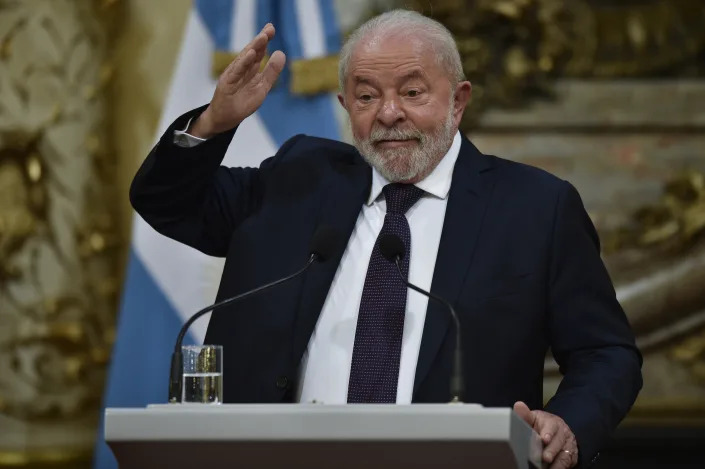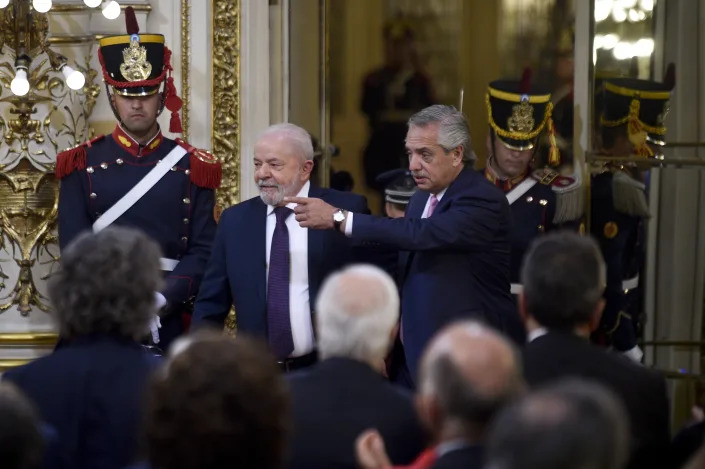1
DAVID BILLER and ALMUDENA CALATRAVA
Tue, January 24, 2023 at 12:06 AM GMT+2·4 min read

RIO DE JANEIRO (AP) — A proposal floated by the leaders of Brazil and Argentina to launch a common currency is being met with deep skepticism by analysts, who say neither country is positioned to tackle such a complicated undertaking or instill confidence in the idea with global markets.
Brazil’s President Luiz Inácio Lula da Silva told reporters Monday, though, that a common currency would reduce a harmful dependence on the U.S. dollar.
“I think this will happen with time, and it is necessary because there are countries that sometimes have difficulty acquiring dollars,” Lula said in Buenos Aires after meeting his Argentine counterpart, Alberto Fernández. “We must not in the 21st century continue doing the same as what was done in the 20th century.”
The currency would initially be shared between Argentina and Brazil for trade and transactions between the two countries and later be adopted by fellow members of the Mercosur trade bloc, Lula explained. Details remained fuzzy a day after Lula and Fernández announced the outlines in a joint statement published Sunday in Argentine newspaper Perfil.
Speaking in Buenos Aires on Monday afternoon, Brazil’s Finance Minister Fernando Haddad clarified that the proposal would not entail the adoption of a sole currency to replace the Brazilian real and the Argentine peso.
Economists had immediately questioned the logic of the plan between the South American neighbors. Economic conditions are deteriorating in Argentina, where nearly four in 10 people live in poverty. The nation has one of the world's highest inflation rates — 95% in 2022 — and its peso has been steadily depreciating for over a decade. Its multiple foreign exchange rates include an illegal one employed in backrooms by money-changers — a practice so entrenched that this so-called “blue dollar” rate is published daily in newspapers.
Brazil, Latin America’s largest nation, sits in an objectively better place economically, but it is hardly a beacon of success. Its inflation in 2022 exceeded the ceiling of the central bank's target range for a second straight year. And the real has shed half its value against the dollar since 2014, just before the nation plunged into its deepest recession in a century. The nation's growth prospects remain subdued, and it hasn’t recorded a primary budget surplus since 2013.